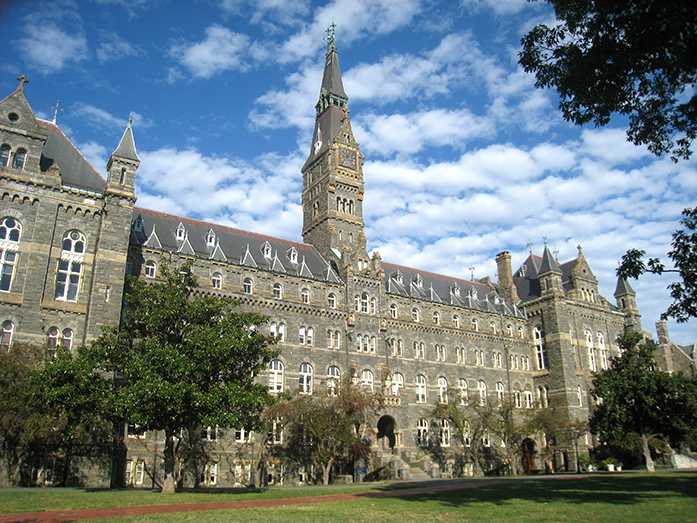Marcus Brown
marcusvbrown@gmail.com
History is inescapable. It lives in not only in words and thoughts but in the physical infrastructure that gives shape to our reality. We live in an all-encompassing mausoleum that houses the best and worst of our history, and in some places the worst is too well preserved. This holds true at Georgetown University in Washington, D.C., where the names of two buildings on campus will be changed because they are named after former slave owners.
The buildings, Mulledy Hall and McSherry Hall, were both named after former presidents of Georgetown University involved in the selling of slaves. Thomas F. Mulledy “sold hundreds of slaves to eliminate Georgetown’s debts,” and William McSherry “advised on the sale and also sold slaves.” Racism is not something that simply disappears with time, but their relics have no place on campuses of higher learning.
Racism on college campuses has become a combustible topic with the recent events at the University of Missouri and for a good reason. It is the responsibility of all on a college campus to combat the passive and overt examples of racism in their environment, as demonstrated by the organized protests in Missouri and the “16-member panel of administrators, students, and faculty” at Georgetown University instrumental in the push for the building name changes.
Colleges and universities across the nation should take note of this progress and make the decision to examine and re-examine the environment that surrounds them. At Iowa State, the name of a building came under scrutiny because of quotations attributed to the woman the building was named after. The Carrie Chapman Catt Center for Women and Politics, named after “a crusader for women’s suffrage and founder of the League of Women Voters,” faced opposition to its eponym because of a racist statement attributed to her.
While pandering to Southern states for the ratification of the 19th Amendment, Catt said, “White supremacy will be strengthened, not weakened, by woman’s suffrage.” The argument that it was a different time, both for Catt and the former presidents of Georgetown University, does not rationalize or justify their actions whether be it examined through the lens of past or present. It certainly does not merit the naming of buildings after them, either. While their success and contributions to white society can be spun into a narrative seemingly worthy of praise, it must be acknowledged that we live in a world of multiple, interwoven narratives.
While history cannot be overwritten or changed, allowing for buildings to be named after racists does not simply serve as a reminder. It perpetuates the very real and current forms of systematic discrimination.
In the United States, the ghosts of racism literally live in the infrastructure, and as a result, they are given new form and constitution in the modern world. Racism is more than being called a nigger. It’s living on a campus and sleeping in a dorm named after a school president who sold people who looked like you into slavery to pay for it.



